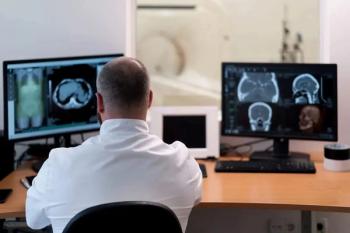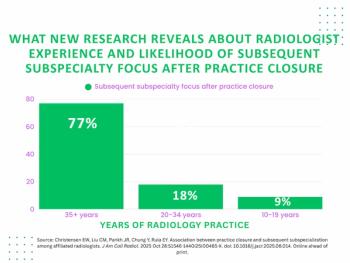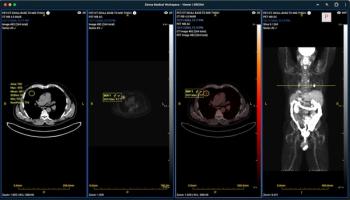
IBM's Watson: Handy Radiologist Aide?
Once programmed for radiology, this technology will save time and will be a handy assistant, but first PACS vendors must get on board with health records integration.
Since IBM’s supercomputer Watson bested numerous Jeopardy contestants early this year, predictions have swirled about computers replacing humans. In reality, the technology isn’t there yet, but that doesn’t mean it won’t soon
According to its creators, Watson is intended to be an electronic health record super-reader. Currently, the technology makes diagnoses by searching its vast database of medical texts and journals after you provide a patient’s symptoms.
Once programmed for radiology, this technology will save time and will be a handy assistant, said Eliot Siegel, MD, University of Maryland School of Medicine radiology professor and imaging informatics vice chair.
“As a radiologist, it can take you between five minutes to an hour to read a patient’s complete history and get a full understanding of the reason behind the scan and what their recent treatments have been,” Siegel said. “There’s great potential for Watson to truncate that time, help with diagnosis, offer treatment summaries, synthesize charts, and perform safety checks.”
The biggest hurdle for radiology, though, is the disconnect between EHRs and PACS. In most health care settings, you can’t see an EHR and a PACS on the same screen simultaneously. But work is underway to fuse the systems, said Arun Krishnaraj, MD, MPH, abdominal imaging and intervention clinical fellow at Massachusetts General Hospital.
Krishnaraj is working with MGH colleagues on an alternative to Watson - a similar, Google-like system called QPID (Querative Patient Inference Dossier). QPID lets you enter search parameters and returns results in a spreadsheet. Radiology must invest in these advancements to keep pace as other specialties adopt health information technology, Krishnaraj said.
“We need to be on the cutting edge of using EHRs correctly in radiology because it’s connected to pay-for-performance. If we aren’t, we’ll be left behind,” he said. “Technology layering EHRs and PACS has huge potential to improve efficient and quality for diagnostics.”
Siegel agreed but said the onus of achieving integration lies with PACS vendors. Even early-stage Watson technology has the capability to pair seamlessly with PACS, but vendors must be forward-thinking to make it successful.
While these advances will help you, Krishnaraj doubts Watson or similar technology will ever completely assume your diagnostic responsibilities.
“A lot of therapy in health care comes from the physician-patient relationship where the physician often helps someone feel better by speaking to them,” Krishnaraj said. “If you eliminate the physician, medicine becomes a science with sets of information. People aren’t going to enjoy strictly dealing with a computer.”
It’s a valid concern for those who believe the skills of radiologists or other diagnostic physicians will atrophy because they view the computer as a crutch, Siegel said.
“The same thing was said about the calculator or the slide rule instead of adding up numbers,” he said. “But if you think about informatics and how we’ve incorporated them, our practices have only improved. I see this technology as new tennis shoes or something that can decrease wind resistance if we use it wisely.”
Newsletter
Stay at the forefront of radiology with the Diagnostic Imaging newsletter, delivering the latest news, clinical insights, and imaging advancements for today’s radiologists.






























